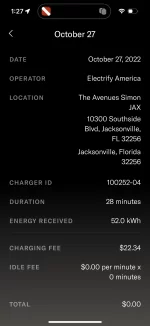On a long trip, such as we start tomorrow (3000 miles round trip), it can make a big difference since we will be stopping at between 3 and 4 EA stations a day, depending on outside temp, wind, and degree of altitude change (mountains). When I start out charging at only 158 kW, it drops down to about 50 kW in 40 minutes. During that time, I only add roughly 50 kWh which tops me up to 90% SOC. Yet, Lucid touts 300 miles of range in 20 minutes when starting out at 350kW. Now, those 300 miles really turns out to be about 200 or so miles when I am climbing up mountains and driving into a 20 knot wind at 30 degrees. Thus, I end may up wasting an extra 1 to 1.5 hours if I can only start out at 158 kW.
A previous comment is absolutely correct when he stated I should not charge up until I get below 20% SOC. At that point, the batteries will more readily absorb the bulk of 350 kW being pumped into them, at least for a little while.
The truth of the matter is, I just need to chill and try planning to arrive at the various EA stations with a realatively low charge and then sit back and enjoy life while the chargers and the car do their thing. I will arrive when I arrive at our hotel each evening. Using ABRP helps in dong the planning on when to stop, and at what arriving SOC and when to leaveand how high I should charge up to get me to the next EA station. I will post my experience and results when the trip is over.

